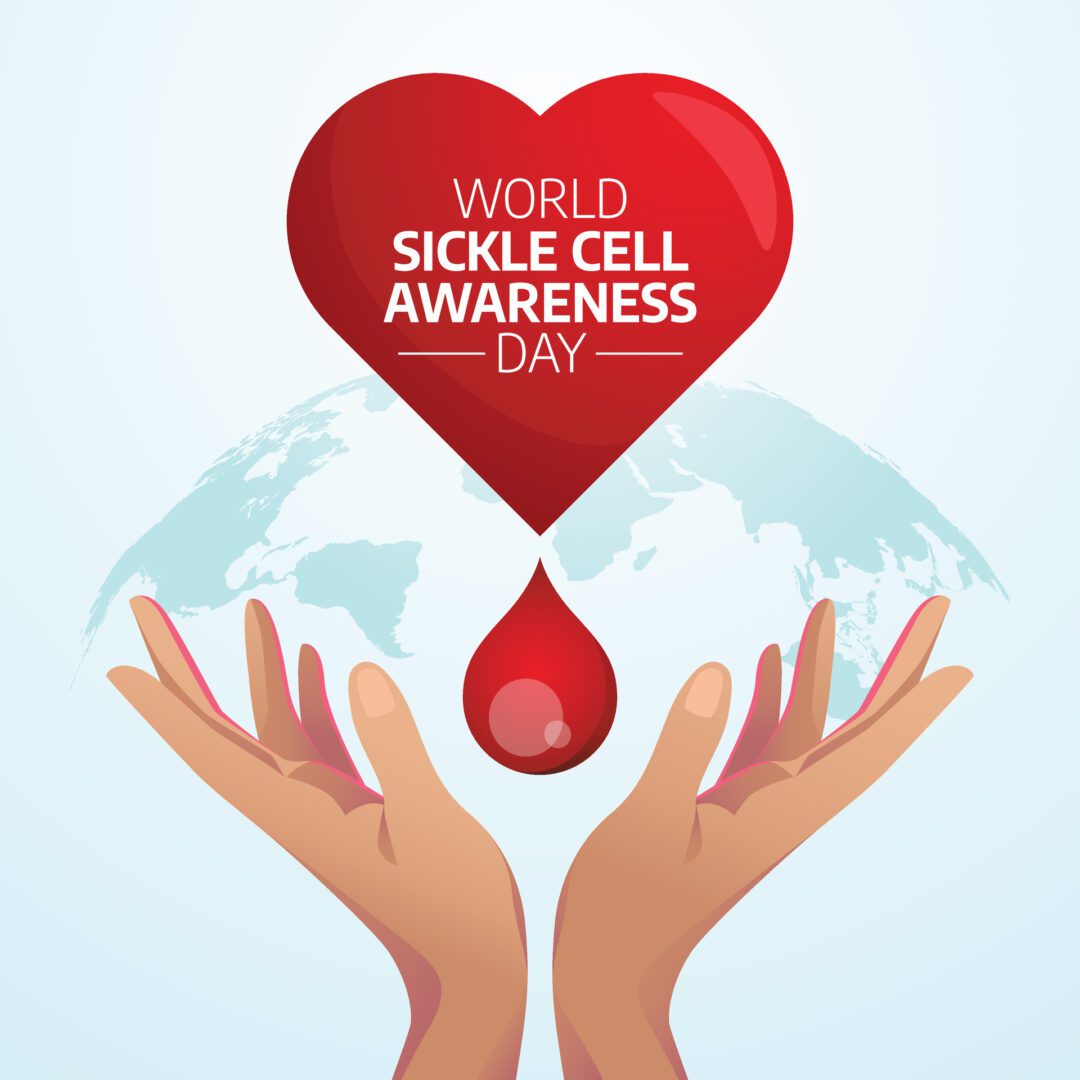Search by Color or Cause


Shine the Light is a national awareness campaign to celebrate World Sickle Cell Day. Join with friends, family, neighbors and others in your community on June 19, as people around the nation and across the globe host and hold local gatherings to shine the light on sickle cell disease. The goal of this awareness campaign is to find a universal cure for sickle cell disease.
Hemoglobin is the main substance of the red blood cell. It helps red blood cells carry oxygen from the air in our lungs to all parts of the body. Normal red blood cells contain hemoglobin A. Normal red blood cells that contain hemoglobin A are soft and round and can squeeze through tiny blood tubes (vessels). Normally, red blood cells live for about 120 days before new ones replace them.
Sickle cell disease is an inherited blood disorder that affects red blood cells. People with sickle cell disease have red blood cells that contain mostly hemoglobin S, an abnormal type of hemoglobin. Sometimes these red blood cells become sickle-shaped (crescent shaped and S stands for sickle) and have difficulty passing through small blood vessels. When sickle-shaped cells block small blood vessels, less blood can reach that part of the body. Red blood cells containing mostly hemoglobin S do not live as long as normal red blood cells (normally about 16 days). They also become stiff, distorted in shape and have difficulty passing through the body’s small blood vessels. When sickle-shaped cells block small blood vessels, less blood can reach that part of the body.
Parts of the body that don’t receive a normal blood flow eventually become damaged. This is what causes the complications of sickle cell disease although some individuals may be eligible for a curative bone marrow transplant. There is currently no universal cure for sickle cell disease.
Sickle cell conditions are inherited from parents in much the same way as blood type, hair color and texture, eye color and other physical traits. The types of hemoglobin a person makes in the red blood cells depend upon what hemoglobin genes the person inherits from his or her parents. Like most genes, hemoglobin genes are inherited in two sets, one from each parent.
There are several types of sickle cell disease. The most common are:
The majority of individuals with sickle cell disease have hemoglobin S, but some make a different type of abnormal hemoglobin like hemoglobin C, hemoglobin D, or hemoglobin E. Also, some individuals can have sickle cell disease because of co-inheritance of beta thalassemia. It is important to learn from your physician which type you have.